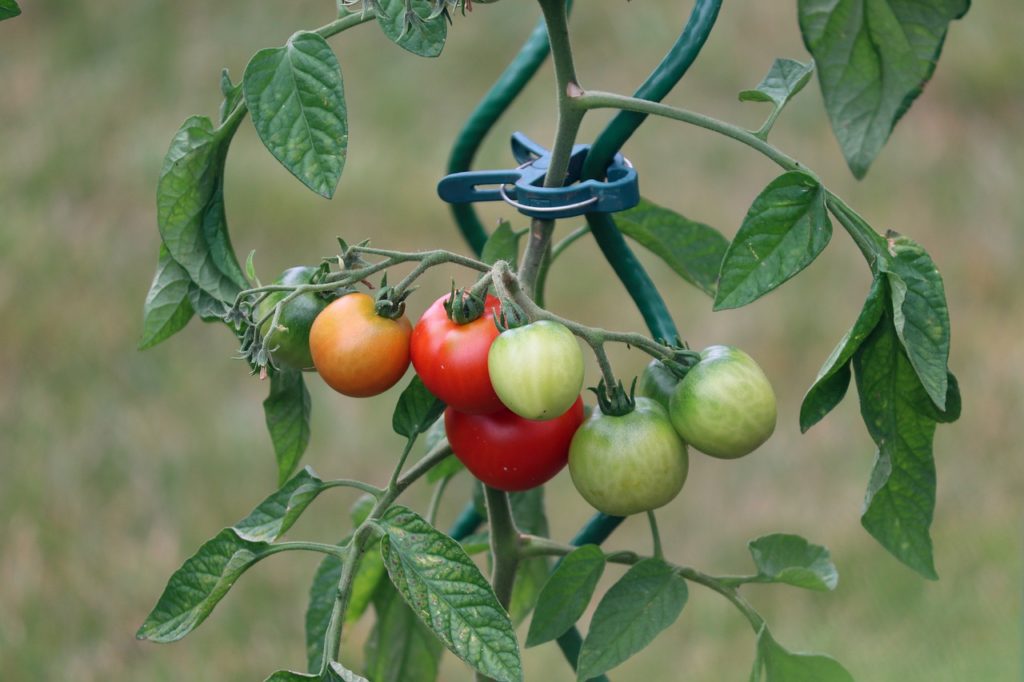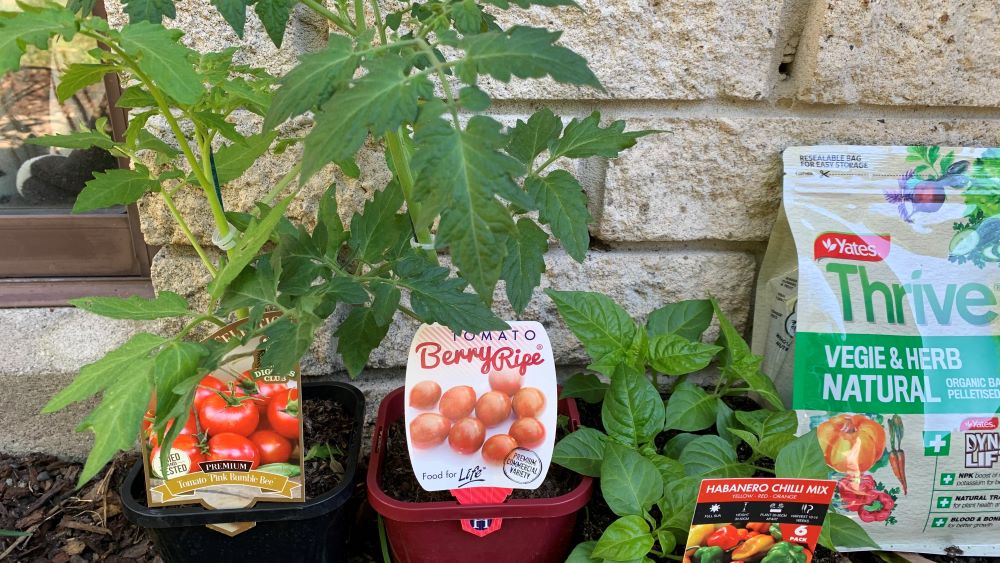Tomato sprouts can wilt if they lack water, suffer sunscald or sudden sun exposure, if they do not have all of the nutrients they need or are grown in poor soil. Cold weather or frosts can also cause damage which can cause the tomato sprout to wilt.
This article will explore all of the causes of tomato wilt so you can figure out what is happening to your tomato sprouts and how you can fix it. Tomato plants are hardy and will recover quickly when the problem is solved.

Why tomato sprouts wilt
There are a few common reasons why tomato sprouts will wilt including lack of water and sunscald. Check them out below.

Lack of water
Lack of water is likely to be the top reasons why tomato sprouts will wilt. Small tomato seedlings will be sensitive to a lack of water so a sudden warm day or a period of dry soil can cause the leaves to quickly wilt.
The plant will be conserving water and holding the moisture in the center of the plant rather than sending it out to the leaf tips. This causes the leaves to wilt.
This problem is easily solved by regular watering. It is best to water your tomato sprouts in the morning using a hose or watering can. Make sure to give them water at their root base and avoid splashes on their leaves and stems. This will reduce the chance of disease spreading from the soil to the plant.
Applying mulch around the root zone will also help to reduce the risk the tomato sprout drying out and wilting. Use a 2-3 inch layer of straw, sugar cane or bark mulch. You can even layer a few pieces of newspaper on the soil first for longer lasting protecting against weeds.
For more on this check out my previous article here on how to mulch tomatoes with newspaper.
Sunscald + Sudden sun exposure
Tomato sprouts can suffer from sunscald when they experience their first sunny days after being transplanted from their greenhouse. When you bring tomato sprouts home from a nursery they will have been grown in protected conditions and not exposed to direct sunlight.
A full-sun day can cause the leaves to turn white on the edges which is a sign of sunscald. The easy solution to this is to water the plant well to help it recover. You can give the tomato sprout a dilute feed of liquid nitrogen fertilizer and they will usually recover within a few days.
Once new leaves start to grow, the old, damaged leaves can be pinched off and thrown away. Sun damaged tomato leaves will not recover but will be replaced with new ones.
Hardening off tomato sprouts
Hardening the tomato sprout can help it to transition to a full sun position without wilting. Take it outside into the morning sun gradually over a week or two. Start with a 1-2 hours of direct morning sun and gradually increase this until they can handle being outdoors all day.
Doing this will help to reduce the shock experienced by the plant when they move from the indoor greenhouse environment to outdoors.
Nutrient imbalance
A lack of nutrients can cause a tomato sprout to wilt. If a tomato sprout does not have enough nitrogen, phosphorus or potassium it can cause poor growth. A general fertilizer is an easy way to solve this problem and I like to add pelleted chicken manure when I plant them out into my garden bed.
This fertilizer contains range of nutrients which will feed the plant over time. This can be added again throughout spring every 4 weeks to give the plant plenty of nutrients to grow.
Stop adding this fertilizer in summer to encourage the plant to use up the nitrogen in the soil and grow flowers and fruit.
Cold weather
Cold weather is another cause of tomato sprout wilt. Tomatoes love warmer days and will survive best when planted out in Spring after the risk of frost has passed. A frost covering can quickly damage young tomato leaves or even kill of the plant in one night.
If you have tomato sprouts planted out in exposed garden beds, you will need to protect them if frosts are predicted. A clear soda bottle with the bottom cut out and top removed is an easy way to cover small plants when you know that frost is coming.
Frost damage that is minimal will not kill the sprout completely and it can recover if it is watered well. Ideally tomato sprouts will be planted out when the weather warms and the nights are no longer as cool. Depending on your region, you may need to wait until late Spring.
Too much water
Too much water given to tomato sprouts can cause the plant to wilt. Severe overwatering will lead to black tips on the leaves which is a sure sign of over watering. Give the plant a day or so to dry out and check the soil before adding more water.
While tomatoes need regular water, soggy soil can cause the roots to rot int eh ground and the plant will wilt and not absorb the nutrients it needs.
Damping off
Damping off can affect young tomato sprouts causing them to wilt. This is a fungal disease that can grow in old pots, old potting soil or on garden tools in damp conditions. They can be transferred to the tomato sprout often when old pots are used to grow the seeds.
Make sure you clean your pots thoroughly before growing seeds in them. This can also be transferred by gardening tools so clean these as well before planting out your tomato seeds.
Check out my previous article here on how to disinfect plant pots without using bleach.
Tomato Sprouts Wilting | Summary
Tomato sprouts can wilt for many reasons but the most common one by far is underwatering. Tomato sprouts are delicate and can easily die off if they are left to dry out on a warm day. Tomato seeds are high maintenance and usually need water each day to keep them happy.
While I have raised tomato seeds in the past, and actually managed to grow a cherry tomato from seed over winter this year I often go for more established seedlings. This gives you an easy way to get a more established and hardy tomato plant in a short time.
The new range of seedlings available is getting better with heirloom varieties now available in larger plants. I am trying some new varieties this year to see how they grow in my raised garden beds.
Happy planting.
Tomatoes
- Will tomatoes grow in 4 hours of sun? | Tips for success
- Will tomato seedlings recover from sunscald? | 4 Ways to know
- Will tomato seedlings recover from sunscald? | 4 Ways to know
- Mulching tomato plants with newspaper | 6 Easy Steps
- Tomato seedlings not growing | 7 Top Causes and Cures
- How to keep mice off tomato plants | Top 7 extraordinary solutions
- How to grow Beefsteak Tomatoes
- Tomato seedlings turning yellow | 8 Reasons and easy solutions
- Leggy Tomato Seedlings | How to solve this problem
- Tomato Sprouts Wilting | Causes + How to Fix it
I am an accredited practicing dietitian, experienced gardener and a dedicated cook. I love writing and sharing my experience so you can learn from my successes and mistakes.
